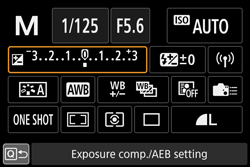Exposure Compensation
Photography 101
Introduction
Today I feel like sharing something around photography. Just a little background around my photography journey. I have been photographing wildlife for the past 10 years. I started with a point and shoot camera and eventually switched to a DSLR. In future, I may be able to provide some more insights into my overall process. I do very little post processing on the photos. Most likely it is going to be around my approach for shooting a particular subject, camera settings and my thought process.
Mostly I do wildlife photography, but I have covered my friend’s weddings as well. In addition to that I also have assisted photographers for a magazine photoshoot in the earlier days of my photography journey.
Exposure Compensation
I feel this is an underrated or less frequently used tool in the arsenal of a new photographer. Especially photographers who are still getting used to DSLR. I feel this is one of the most important tools. Especially for high action photography genres like wildlife, wedding or sports. A quick note that I am also a learner but try to provide as much depth as I possibly can on the topic.
I rarely use Manual mode so I will start by explaining my own camera settings. I usually shoot in aperture priority. In aperture priority, I can select the F-Stop number and based on my selection the camera will decide the shutter speed based on the scene and lighting conditions. One important thing to consider here is ISO. I set ISO manually else it gets very tricky to get the shot that you want. So I control the F-stop number and ISO while the camera decides the appropriate shutter speed.
Now one important thing is that, camera decides what is the correct exposure for the scene. Based on that decision making, the camera will try to adjust shutter speed. the camera can not understand the kind of photo that you are planning to take. Rather than that, it will try to fill in most of the information based on its sensing system. This leads to weird results. Here is the image taken from canon support site for reference. The highlighted area is used to perform exposure exposure compensation.

Expousre compensation in a way helps to push histogram either to the right side or left side. Left side of the histogram indicates Black while the right side of the histogram indicates White. In an idea case, the histrogram should be between these 2 numbers and form a bell like curve. But this is theory. Depending on the kind of image visualized, it is ok to push histogram on the either side of the histogram. Below I am showing 2 images taken with aperture priority but different exposure compensation value.
EXIF:
F-stop = f/6.3
Shutter speed = 1/160 sec
ISO = 400
Exposure Comp = +0.3
Focal Length = 600mm
EXIF:
F-stop = f/6.3
Shutter speed = 1/125 sec
ISO = 400
Exposure Comp = +1.7
Focal Length = 600mm
By observing the above 2 images and its EXIF information, you can probably see the difference in the result. This image was captured in Rampur, Himachal pradesh earlier in the morning. Now in the first image, I saw that the eye is a bit blending with the head and the bird is not highlighted the way I want it. So in order to enhance that, I pushed exposure compensation to +1.7. By doing so, I am pushing the histogram to the right. Which means that I may loose some information in the extreame while part of the image but since my desired subject (Bird) is exposed in a correct way so I can afford to loose information from the background.
Conclusion
I feel this is one of the powerful and basic tools of a DSLR. The same thing we do perform on most smartphones these days. These allows me to capture the image more quickly without changing a lot of settings. Since I do wildlife photography, usually they allow very little time to adjust. You always have to be prepared else there are high chances that you’ll miss a precious moment. Aperture priority + exposure compensation combo is a great way to capture high action photos and worry less about the camera settings.

Share this post
Twitter
Reddit
LinkedIn
Pinterest
Email